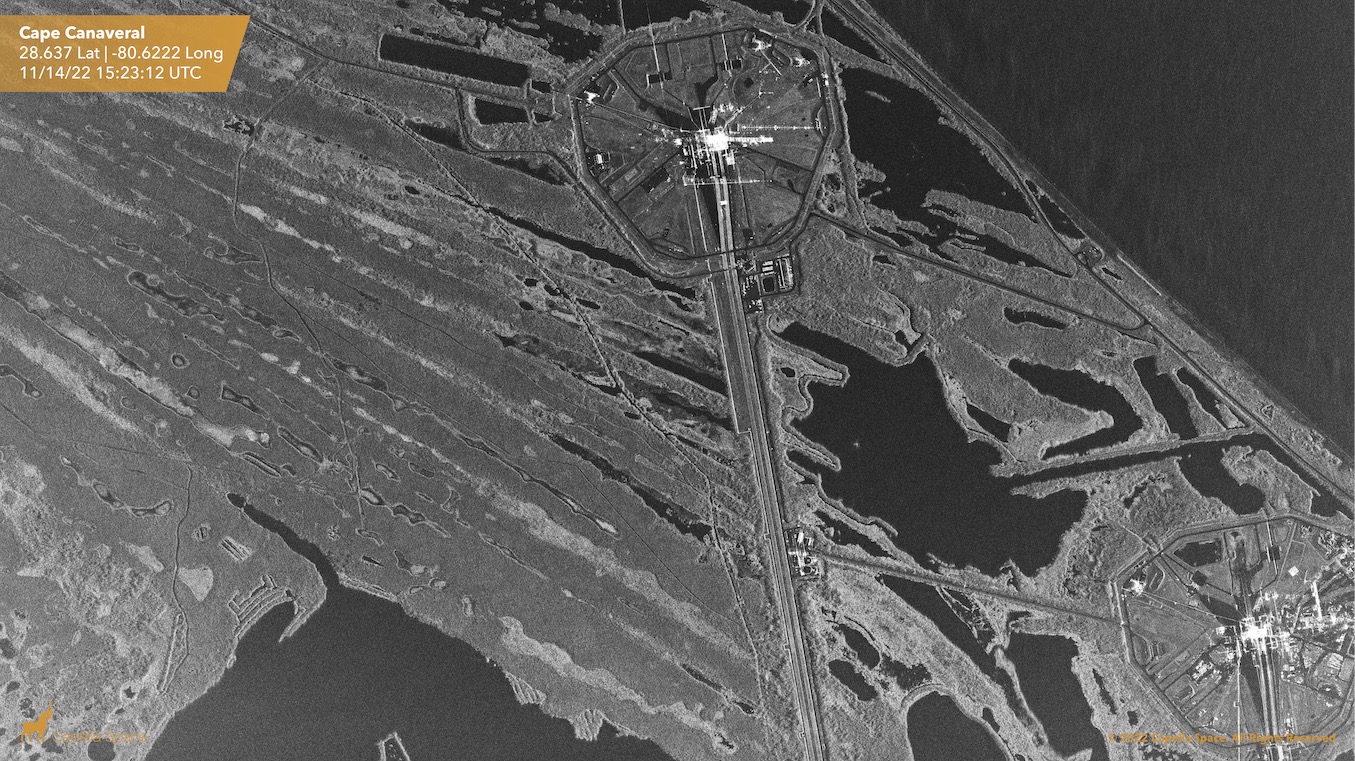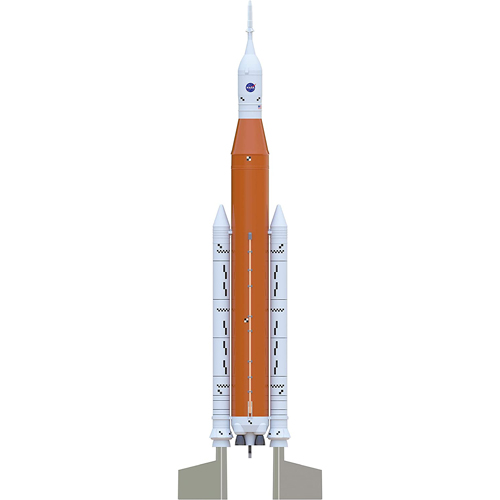
A sharp-eyed satellite captured what may be some of the Artemis 1 moon mission's final moments on Earth.
Artemis 1 is scheduled to launch from NASA's Kennedy Space Center (KSC) on Wednesday (Nov. 16) during a two-hour window that opens at 1:04 a.m. EST (0604 GMT). You can watch the liftoff here at Space.com, courtesy of NASA.
Photographers have been assiduously chronicling the leadup to Artemis 1's highly anticipated launch, and we just got a nice and novel perspective on it thanks to Capella Space. One of the San Francisco-based company's satellites captured a high-resolution of the Artemis 1 stack — a Space Launch System (SLS) rocket topped by an Orion crew capsule — sitting on KSC's Pad 39B on Monday (Nov. 14).
Related: Watch NASA's Artemis 1 moon rocket launch on Nov. 16 online for free
Read more: NASA's Artemis 1 moon mission: Live updates

You can launch a Space Launch System of your own with this Estes NASA SLS model rocket for a 1:200 scale version of NASA's moon megarocket. Read more about it.
The shot is black-and-white, for Capella Space specializes in synthetic aperture radar (SAR) rather than visible-light imaging. This strategy has some definite advantages.
"SAR sensors are self-illuminating and can penetrate clouds, fog, smog, darkness and smoke," Capella Space's website reads. "Operated from low Earth orbit, Capella's SAR systems can reliably collect images in all weather conditions both night and day."
Capella Space sells the data collected by its satellites to a variety of customers, who use it for a wide range of purposes, from agricultural monitoring to the tracking of threats to national security. But the company also freely releases imagery of pressing importance, such as shots showing movements of Russian troops during the ongoing invasion of Ukraine.
Get the Space.com Newsletter
Breaking space news, the latest updates on rocket launches, skywatching events and more!
Artemis 1 is the first mission for the SLS and for NASA's Artemis program, which aims to set up a crewed lunar base by the end of the 2020s.
If all goes according to plan, the SLS will launch Orion on an uncrewed mission to lunar orbit that will last about 26 days from liftoff to splashdown. Artemis 1 will be the second flight for Orion; a United Launch Alliance Delta IV Heavy rocket launched the capsule to Earth orbit on an uncrewed test flight in 2014.
Mike Wall is the author of "Out There" (Grand Central Publishing, 2018; illustrated by Karl Tate), a book about the search for alien life. Follow him on Twitter @michaeldwall. Follow us on Twitter @Spacedotcom or on Facebook.
Join our Space Forums to keep talking space on the latest missions, night sky and more! And if you have a news tip, correction or comment, let us know at: community@space.com.

Michael Wall is a Senior Space Writer with Space.com and joined the team in 2010. He primarily covers exoplanets, spaceflight and military space, but has been known to dabble in the space art beat. His book about the search for alien life, "Out There," was published on Nov. 13, 2018. Before becoming a science writer, Michael worked as a herpetologist and wildlife biologist. He has a Ph.D. in evolutionary biology from the University of Sydney, Australia, a bachelor's degree from the University of Arizona, and a graduate certificate in science writing from the University of California, Santa Cruz. To find out what his latest project is, you can follow Michael on Twitter.









